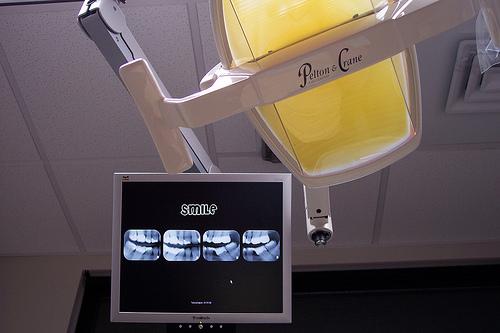There’s been a lot of talk about radiation lately – how much we’re exposed to, how that exposure may affect your health. Consider this intro to a recent article in Time, for instance:
It’s no secret that some medical exams expose patients to harmful radiation. But how much is too much?
Recent studies have raised the alarm about one increasingly common source: the computed tomography (CT) scan, which doctors use to diagnose and treat everything from concussions to infections to cancer. Dr. Rebecca Smith-Bindman of the University of California, San Francisco, and her team report in one study that usage has tripled since 1996 – a concern, since CT devices tend to emit much more radiation than conventional X-rays in order to take detailed pictures of internal organs. For children, the risk may be especially high. A recently released study by a group of international researcher, which took place over 23 years, found that otherwise healthy children who received CT scans after falls or accidents or to diagnose infections were three times as likely to develop brain cancer and four times as likely to be diagnosed with leukemia as those who opted out of the scans.
 And the concern goes beyond just CT scans. Questions have been raised about dental x-rays, too. Earlier this year, a study published in Cancer found that subjects who routinely had bitewing x-rays – once a year or more – were at much higher risk of brain cancer than those who had not. The researchers also found elevated risk among those who’d had panorex images taken at a young age.
And the concern goes beyond just CT scans. Questions have been raised about dental x-rays, too. Earlier this year, a study published in Cancer found that subjects who routinely had bitewing x-rays – once a year or more – were at much higher risk of brain cancer than those who had not. The researchers also found elevated risk among those who’d had panorex images taken at a young age.
This study has its weaknesses. For instance, as Dr. Mercola has noted,
The study relied on self-reported data, meaning people were asked to share how many bitewing, full-mouth and panorex dental x-rays they’d had throughout their life. This clearly is a major drawback of this study as it leaves plenty of room for reporting errors — for better or for worse.
Additionally, because study participants were older adults, most of the exposure was from film x-rays taken on older equipment – conditions which require much more radiation than the current digital technology we use in our office.
And that points to the main reason why we turned to digital imaging years ago: It uses up to 90% less radiation than traditional film x-rays. What’s more, we don’t have to stock developing chemicals, further reducing potential toxic exposure.
Just as importantly, we only take x-rays when Dr. Glaros deems them necessary. For in some cases, x-rays are the best and even the only way we have to understand what’s going on within your teeth and below your gums, in the jawbone. Consequently, they’re an important diagnostic tool.
They should never be “routine.”
Shortly after the dental x-ray study made the news, one pollster asked dentists if the study would affect their use of x-rays. Of the 251 who responded, 66% said “Definitely no!” and another 2/3 expressed skepticism of the study. How much overlap there is, we can’t say. But we hope that at least some said “no” because they’ve already taken measures to reduce their patients’ exposure to radiation in the dental chair.
Those measures – digital imaging used only when needed – keep you safe and help us provide you with optimal, biocompatible dental care.
Image by teresia, via Flickr